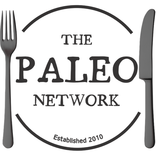Gelatin – The Secret Superfood
Forget Goji Berries, Spirulina and Peruvian Maca Root, there is one ‘Superfood’ that you can guarantee your ancestors would have consumed in abundance that you’re probably not getting enough of now – Gelatin. As conventional wisdom has seen us spurn traditional cuts in favour of lean muscle meat, our intake of gelatin has dropped to almost zero. However, the body still craves it – and here’s why.
Found in the connective tissue, bones and cartilage of animals, gelatin is extremely nourishing in a number of ways. It is the best source of dietary collagen, which has been proven to increase the elasticity of the skin and therefore keep you looking young. In fact, the amino acid profile of gelatin, in combination with its high levels of collagen make for great support for healthy skin, hair and nails. It contains 6 grams of protein per tablespoon – and whilst not a complete protein in itself, it helps create a more balanced amino acid profile when taken with other proteins and therefore optimise assimilation. Maybe that’s why roast beef and gravy taste so good!
Gelatin is also fantastic for anyone who suffers from digestive problems. It is unique in the way in which it attracts water molecules during digestion, consequently improving the rate in which food moves through the digestive tract. What’s more, gelatin has been proved to carry gut healing properties, and has been shown to reduce the likelihood of developing a food allergy or intolerance. Strongly anti-inflammatory, Gelatin has also shown to play a significant part in healing Asthma, Chron’s and Colitis.

How to increase your intake
The obvious way to increase your intake of gelatin is by making your own home made stock and bone broth. Pay a visit to your local butchers, and pick up any gelatin rich cuts you can lay your hands on – chicken and pigs feet, ox tail, or even any leftover bones they have out the back. Simmer them very gently for at least 24 hours in a stock pot with hot water, herbs and veggies, and you’ll have plenty of nourishing broth to see you through the week. Drink it as it is, or use it as a base for soups, sauces and gravies.
If time and logistics are against you making your own bone broth, consider taking a high quality gelatin supplement. You can add this by the spoonful to smoothies, or make your own Paleo approved gummies by using gelatin and fruit juice!










